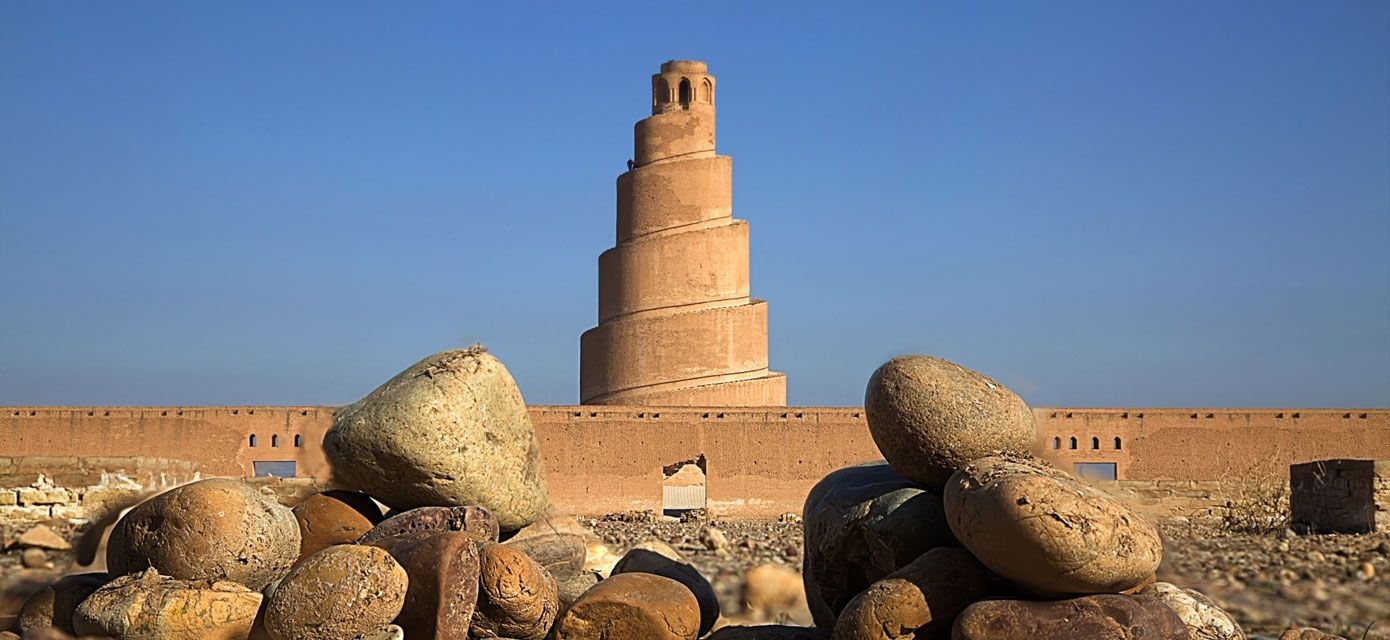Samarra: Abbasid capital
Some 125 km from Baghdad, in Iraq, is one of the best-preserved medieval towns: Samarra. From a microsociety of soldiers, the city became a Muslim capital in the 8th and 9th centuries, thanks to the successive presence of eight caliphates. The Great mosque and its helicoid minaret have survived from this period.

Between 1907 and 1913, archaeologists carried out the first excavations on a small area of the site. The General Directorate of Antiquities resumed the work in 1936.
The spatial organisation of the archaeological site
A major turning point came in 1983 when Alastair Northedge mapped Samarra using aerial photogrammetric technology. This provided the first-ever overview of the 4,000-hectare site. The mission then did field-walking survey to collect sherds (pieces) of pottery from the ground surface. The vast site was divided into 21 sections to facilitate its excavation.
Archaeological remains and literary sources
The study of the site is completed by an analysis of ancient literary sources. Historical accounts and archaeological discoveries are combined with research into the environment around Samarra to produce an overall picture of the site between the 8th and 9th centuries.
The history of the Abbasid capital
The first traces of life on the site, where the present-day town of Samarra is located, date back to approximately 6,300 BCE. Different constructions preceded the Muslim megapolis, which developed in three stages:
- The never-completed construction of an octagonal city at the end of the 8th century by Hârûn al-Rašīd, the fifth Abbasid caliph (third dynasty of caliphs that reigned over the Muslim empire with its capital at Baghdad).
- Founding of an unfinished city by Al-Mu‘taṣim, third son of Hârûn al-Rašīd and eighth caliph, in the 9th century. He made Samarra, then called Surra Man Ra‘a (“He who sees it is delighted"), the new capital of the Abbasids.
- The caliph Al-Matawakil, who succeeded Al-Mu‘taṣim, built a new city whose main building, constructed in 847, was the Great Mosque.
Following the murder of Al-Matawakil in 861, Baghdad once again became the capital of the Abbasid empire. Samarra’s prestige began to wane.
Archaeology and conflict
Research is continuing despite the difficult political and military situation. The city has been inscribed by UNESCO on its List of World Heritage in Danger since 2007.
Combating the theft and illicit trafficking of cultural property is one of the priorities of the French Ministry of Culture, which pays close attention to these issues, in line with its regulatory responsibility to control the movement of cultural property.
Learn more
- Samarra, Abbasid capital, project's page on the web site of UMR Orient et Méditerranée
- Northedge, A., Kennet, D., 2015, Archaeological Atlas of Samarra, Samarra Studies II, British Institute for Studies of Iraq/Oxbow Books. Fascicule 1 / Fascicule 2 / Fascicule 3
- Northedge, A., 2005c, The Historical Topography of Samarra, Samarra Studies 1, British Academy Monographs in Archaeology/British School of Archaeology in Iraq.

